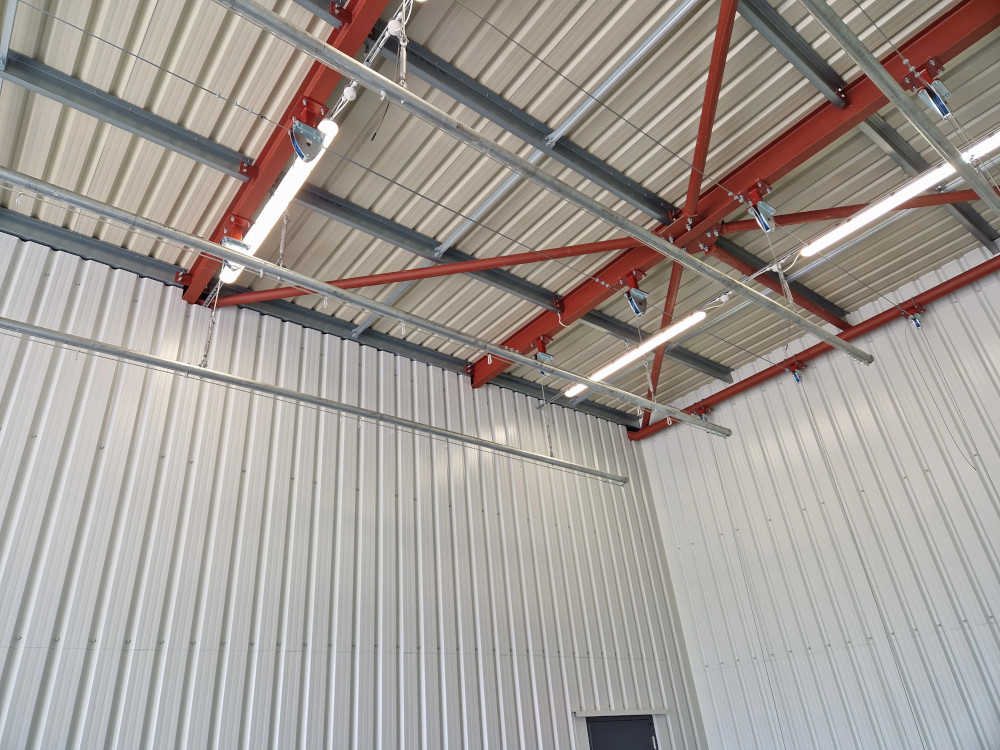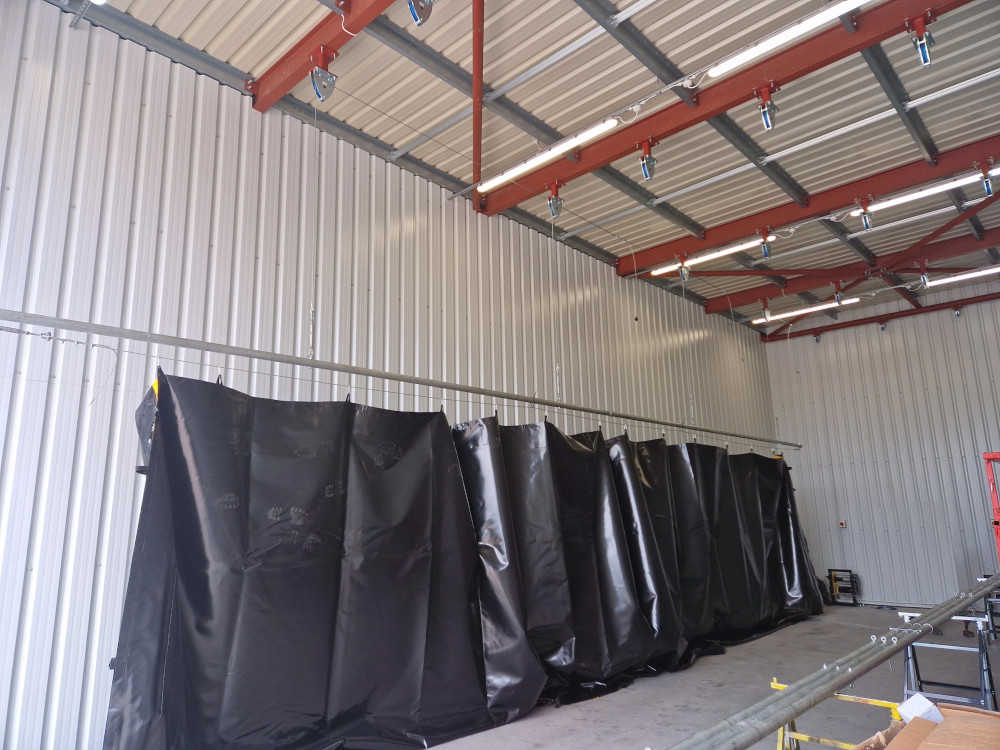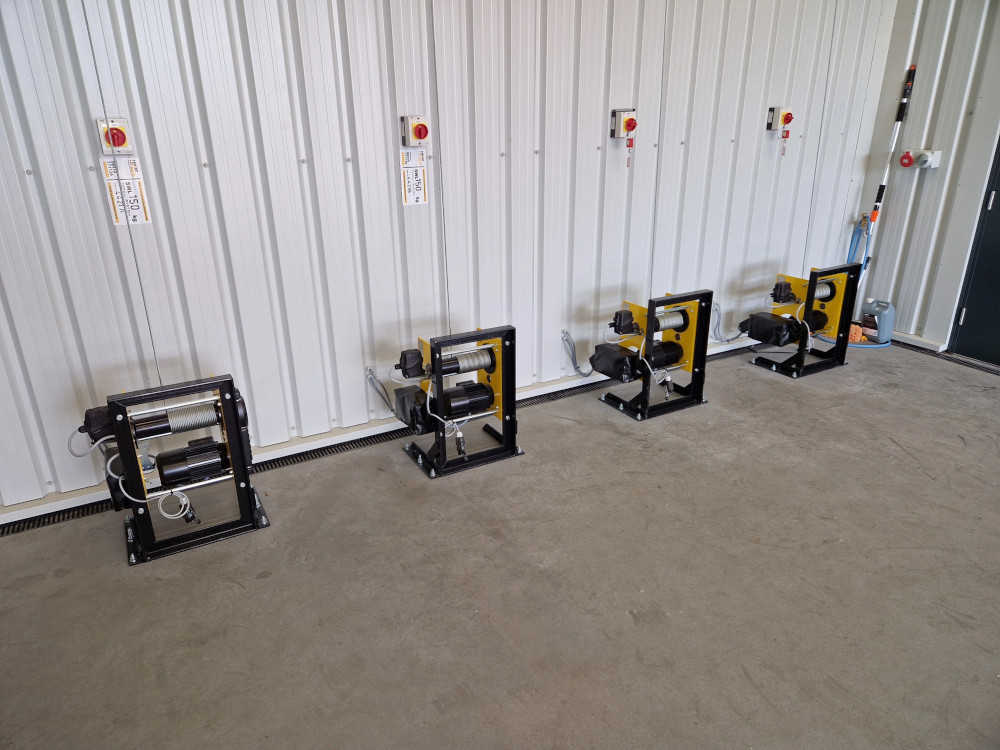Designing custom electric winch systems for wet areas
Customized lifting systems are present in almost all cases, and today’s case comes from a custom-made system for a wet area. Located in a UK plant rental company, the system was designed to raise and lower large vinyl type panels in a purpose-built ‘wet area’ and comprised four floor-mounted 400V three-phase winches, providing a safe working load (SWL) of 150kg and 20 Roof-mounted steering pulleys are connected to four 12m long tubular span beams.
Installation and working methods of winch system

Each winch raises and lowers one of the 12m-long spreader beams, which attach to the vinyl sheet via load-bearing karabiner clips. Each vinyl sheet weighs approximately 60kg. The winch system raises the vinyl sheets in a level position – this capability permits easy drying of the vinyl sheets after pressure washing, a process that removes any unwanted residual substances from the most recent hire job.
The customer can operate all four winches individually via its own wall-mounted, low-voltage pendant controls, allowing the lifting of a single vinyl sheet as required at any time. Each winch sits in purpose-manufactured mounting frames secured to the floor using four Hilti expansion anchors.
The system facilitates a quicker and less labour-intensive turnaround of the vinyl sheets during busy periods of hire.

The scope of supply for Hoist & Winch included all pre-installation survey work to ensure correct the alignment and positioning of each winch, diverter pulley and all associated equipment, including top and bottom hook geared limit switches. Upon customer request, we also offer a 7-day installation and subsequent commissioning. Further responsibilities included all wiring and load testing of the whole system. Once complete, Hoist & Winch issued a Lifting Operations and Lifting Equipment Regulations (Loler) Thorough Examination report.
The room in which the washing, lifting, drying and lowering of vinyl sheets takes place is a purpose-built and enclosed ‘wet area’ with a cambered floor and drainage around the perimeter to support the removal of excess water during cleaning. We provided PVC weather covers for the winch control panels to ensure safety at all times.

Use and maintenance of crane systems in wet environments
The humid working environment is a relatively special working condition. In addition to special treatment in the design process, lifting equipment also requires certain training for the customer’s operators to ensure that the customer establishes a good understanding of the use and maintenance of lifting equipment in humid environments. Correct way to operate. For specific maintenance measures, please refer to the following items:
- Waterproof and moisture-proof treatment: For the electrical part of the crane system, waterproof and moisture-proof treatment is required. For example, waterproof components such as waterproof cables, waterproof connectors, and waterproof sockets can be used to prevent moisture from intruding into the electrical system and causing short circuits or damage.
- Anti-rust treatment: A humid environment can easily cause the metal structure of the crane to rust, so anti-rust treatment needs to be carried out regularly. Anti-rust paint, spray anti-rust agents, etc. can be applied to protect the metal surface from corrosion.
- Lubrication and maintenance: In a humid environment, the moving parts of the crane system are easily affected by poor lubrication, so lubrication and maintenance need to be strengthened. Regularly replace lubricating oil, clean the lubrication system, etc. to ensure the normal operation of moving parts.
- Electrical component protection: For the electrical components of the crane system, such as motors, controllers, etc., additional protection measures need to be taken. For example, electrical component shields can be installed to prevent the intrusion of moisture and dust.
- Regular inspection and maintenance: In a humid environment, crane systems are prone to various failures and problems. Therefore, regular inspection and maintenance are required to detect and deal with potential safety hazards in a timely manner.
In short, in a humid working environment, the crane system requires a variety of protective measures to ensure its normal operation and extend its service life. These measures include waterproofing and moisture-proof treatment, anti-rust treatment, lubrication and maintenance, protection of electrical components and regular inspection and maintenance.
